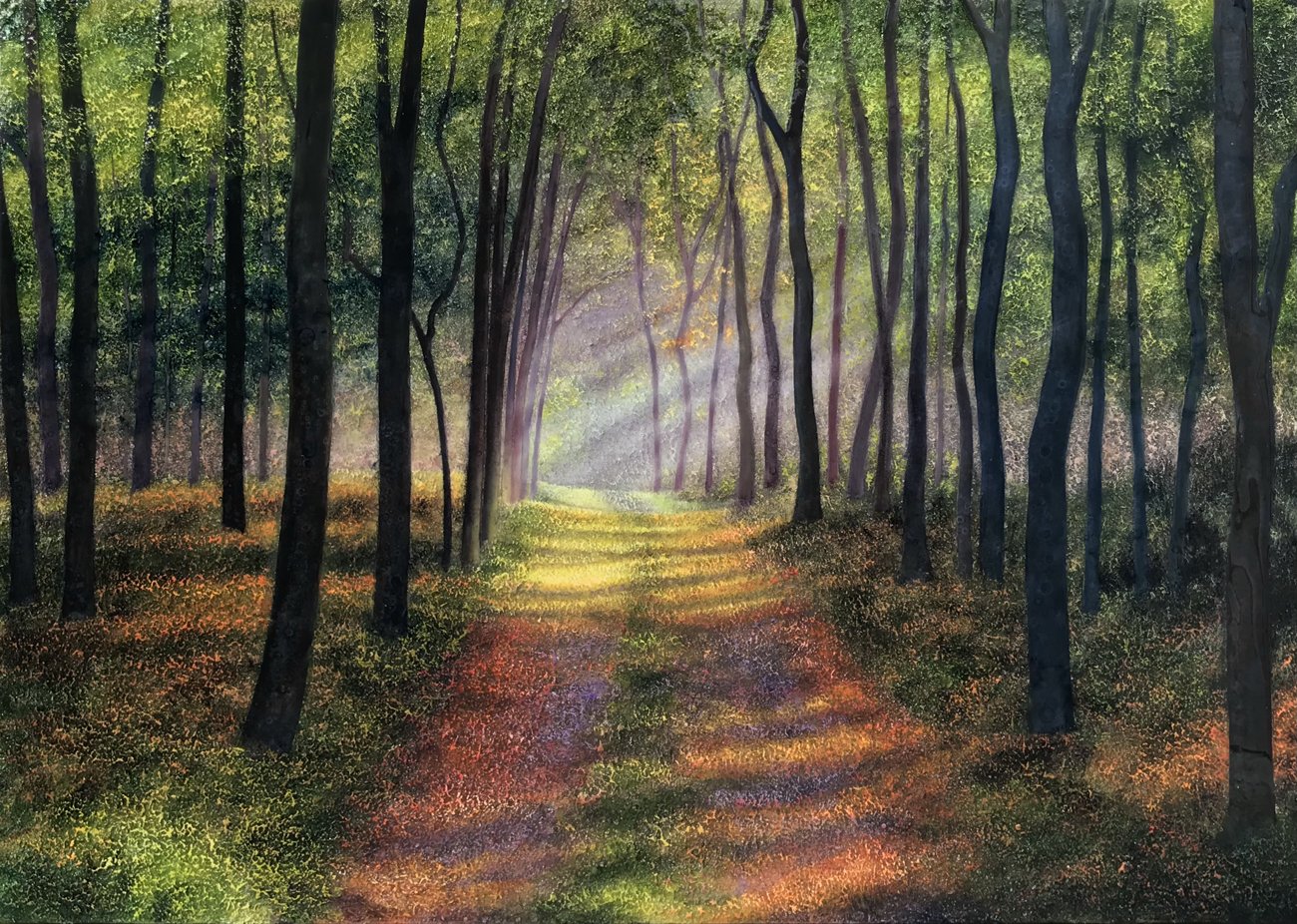“In the Heart of the Woods”
This question definitely falls into the category of “Last but not Least”: “What do you do when you have a mental block?”. This is such a difficult question to answer, and THAT may baffle non artists. I’ve never heard of a doctor or a car mechanic or an attorney or an insurance salesperson say “I just have no idea where to start. My head isn’t in this at all.” Maybe they say that. Maybe I’m making a huge assumption based on ignorance. I just know that when it comes to creating…creating something out of nothing, it requires inspiration. It really does. Whether that’s writing a song that has never been sung, or writing a poem that’s never been spoken or painting a painting that’s never been seen…creating from nothing requires an almost “spiritual” energy.
If that is an accurate way of looking at it, then because I am not God (the source of unlimited spiritual energy), I have only a bit here and there. I am a rechargeable “AA” battery, and not a cold fusion reactor. And so, a creative person absolutely needs to recharge their AA battery or nothing will happen creatively at all.
So my answer to the question of what to do when I have a “mental block” is a very person answer. I have my own answer, but if YOU were asking me this question, rather than telling you my own answer, I would first have to ask you a question. My question would be “What is ‘life-giving’ to you? What recharges you?” Maybe it’s cooking. Maybe it’s hanging out with friends, or hiking, or traveling, or reading, or singing in the shower, or finger-painting or taking a long drive. Do that. Do whatever recharges your own AA battery. My answer is MY answer and I'm fine sharing MY answer when specifically asked, but I don’t think this is the place to do that. See, your answer to a truly “spiritual question” is also a very deeply “personal answer”. Your answer is as custom fit to you as mine is to me. So I make it a rule of thumb not to give my own answer unless I’m actually asked for it.
The point though is, if you are creative and you have a mental block, you need to figure out how you’re put together so to speak. What is akin to “inhaling”? If you exhale (create), you HAVE to inhale to keep the whole process going. This is very, very difficult in our modern western society, because time does not allow for “luxuries” like taking a walk or savoring a slow, quiet afternoon, or turning the lights out and listening to a Brahms Symphony. The way we look at these “luxuries” is all wrong though. We are humans, not robots. We require real, spiritual input to create beauty. That input is not a luxury. That is real. That is life. And that is deeply, deeply human.













